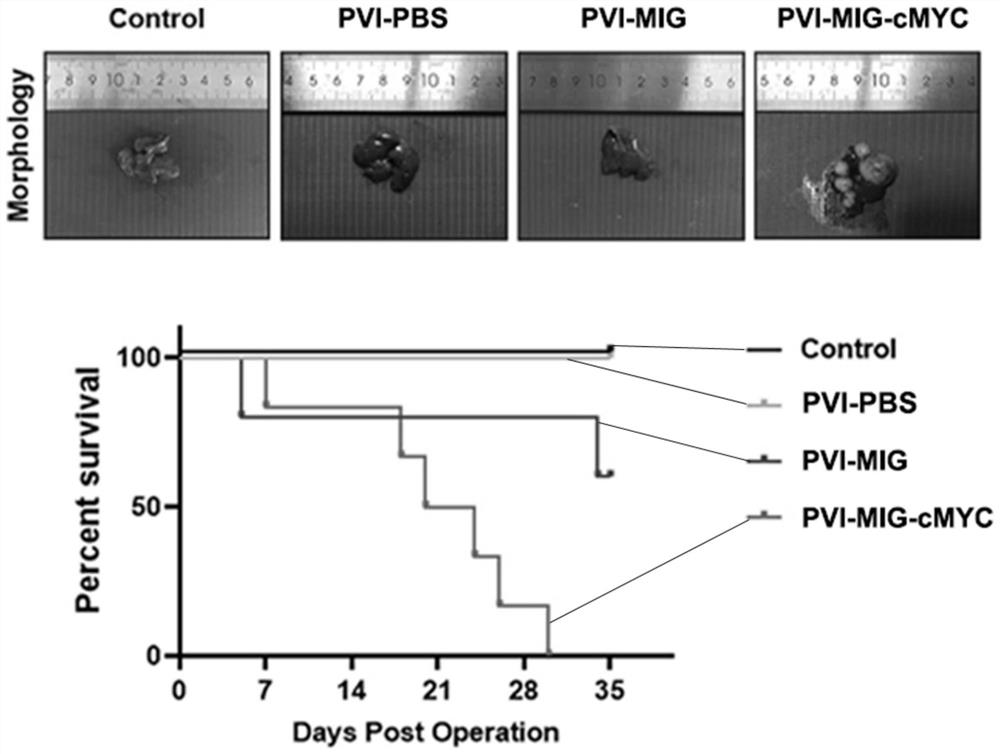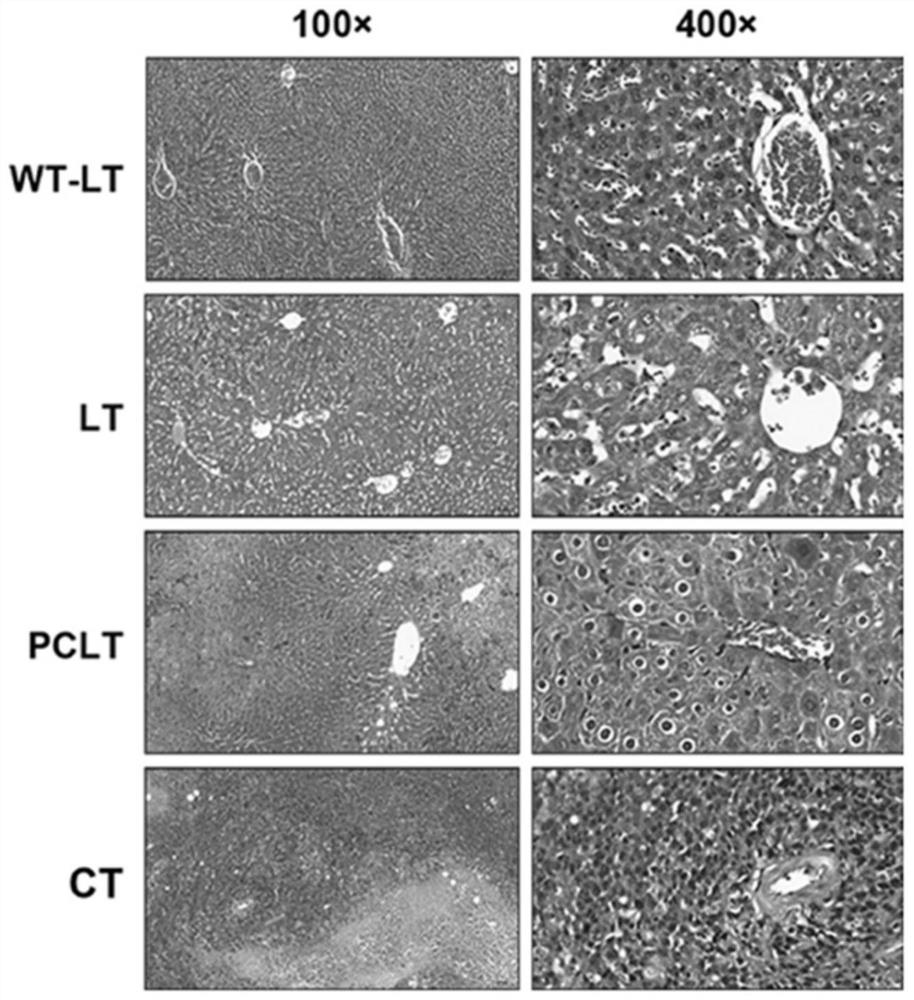Primary mouse liver cancer model based on liver oval cell malignancy as well as establishment method and application of primary mouse liver cancer model
An established method and primary technology, applied in the direction of hepatocytes, chemical instruments and methods, cell culture active agents, etc., can solve problems such as the inability to accurately study the mechanism of specific genes
- Summary
- Abstract
- Description
- Claims
- Application Information
AI Technical Summary
Problems solved by technology
Method used
Image
Examples
Embodiment 1
[0032] Example 1: Establishment of mouse liver cancer cell lines
[0033] (1) Construction of retroviral vector and preparation of virus liquid
[0034]The original retroviral expression vector is MSCV-IRES-ZsGreen1. The MSCV-IRES-ZsGreen1 is transformed, and the cMYC gene is inserted to obtain the target plasmid. After the sequence is correct, a high-quality endotoxin-free target plasmid (ie, MSCV- CMYC-IRES-ZsGreen1). The cMYC gene is a known proto-oncogene in the prior art, which can promote cell division and proliferation. The detection of this gene is used as an auxiliary means for tumor screening, and can also be used in the establishment of tumor animal models to promote tumor formation. In this protocol, the accession number of the cMYC gene used is 110535641. This protocol takes cMYC as an example for illustration. In addition to the proto-oncogene, kRAS, P53, PTEN, KLF6 and P16 and other known proto-oncogenes can also be selected according to actual needs to constr...
Embodiment 2
[0040] Example 2: Establishment of mouse orthotopic liver cancer model
[0041] In this example, the cultured liver cancer cells were orthotopically transplanted into the liver of recipient mice by hepatic portal vein injection, and a mouse liver cancer model was successfully established. One day before the injection, C57BL / 6 mice were irradiated with X-rays (RS2000pro, Radsource, USA) at a dose of 5.5Gy (X-rays were irradiated at 320KV for 270s) for use the next day. The prepared malignant liver oval cells were digested and counted, resuspended in PBS, and prepared into 10 7 / mL cell suspension and put it on ice for later use. Mice were anesthetized with isoflurane, and their limbs were immobilized on an operating table. Routine povidone iodine disinfection, cutting along the midline of the abdomen to 2-3 cm below the xiphoid process of the mouse, exposing the abdominal cavity, exposing the hepatic portal vein with a wet cotton swab and gently provoking it, slowly injecting...
Embodiment 3
[0045] Example 3: Acquisition of primary liver oval cells
[0046] Eight-week-old male C57BL / 6 mice were fed with drinking water containing 0.1% DDC (3,5-diethoxycarbonyl-1,4-dihydro-collidine) for 2 weeks, and then the mice were sacrificed to test whether the DDC model was established success. Image 6 The liver pathology after the DDC mouse model was successfully established showed obvious cholestatic cholangitis. Immunohistochemical staining showed oval cells aggregated and proliferated around the portal vein in the portal area of the liver and expressed CK19 and ALB.
[0047] The DDC model mice were anesthetized with isoflurane, opened the abdomen and exposed the hepatic portal vein, washed the mouse liver with 37°C preheated phosphate buffered saline (PBS), and then perfused with 0.01% type IV collagenase at a rate of 2 mL / min 10min. Then put the liver tissue into DMEM / F12 medium containing 0.01% collagenase IV, cut it into pieces, blow and blow to disperse the cells,...
PUM
 Login to View More
Login to View More Abstract
Description
Claims
Application Information
 Login to View More
Login to View More - R&D
- Intellectual Property
- Life Sciences
- Materials
- Tech Scout
- Unparalleled Data Quality
- Higher Quality Content
- 60% Fewer Hallucinations
Browse by: Latest US Patents, China's latest patents, Technical Efficacy Thesaurus, Application Domain, Technology Topic, Popular Technical Reports.
© 2025 PatSnap. All rights reserved.Legal|Privacy policy|Modern Slavery Act Transparency Statement|Sitemap|About US| Contact US: help@patsnap.com



